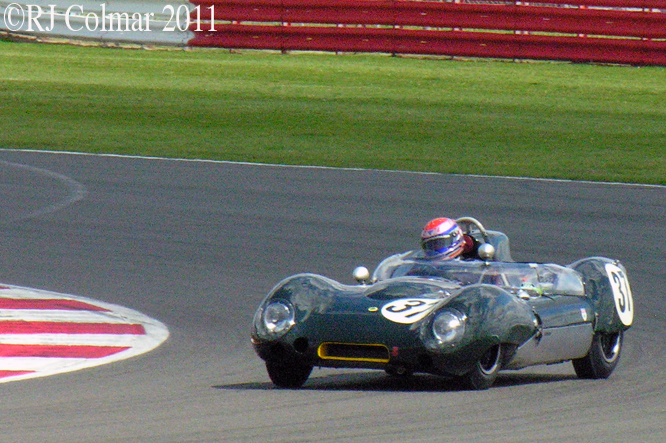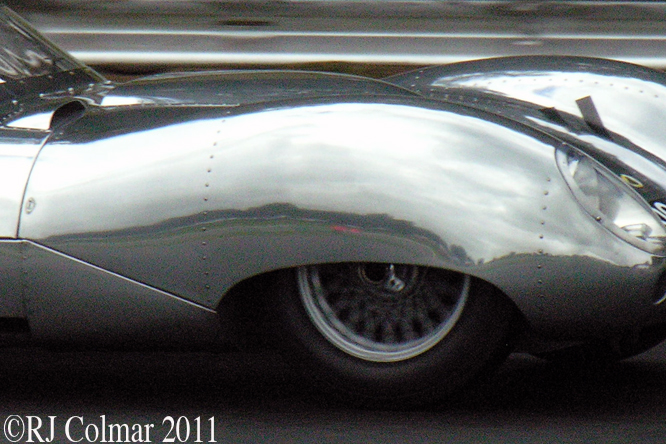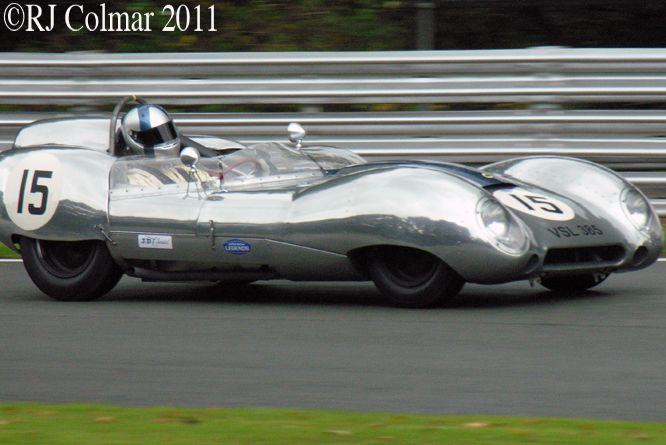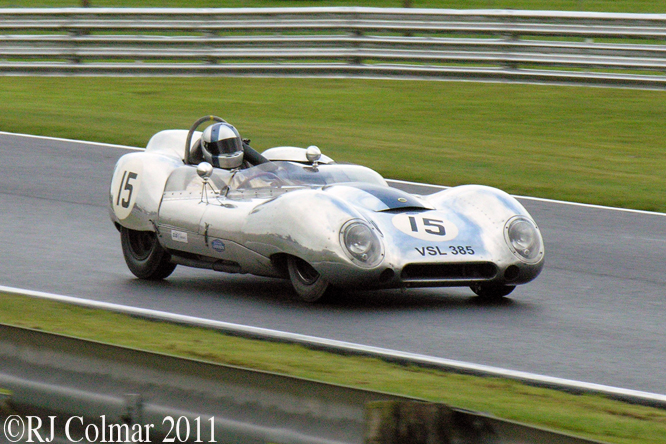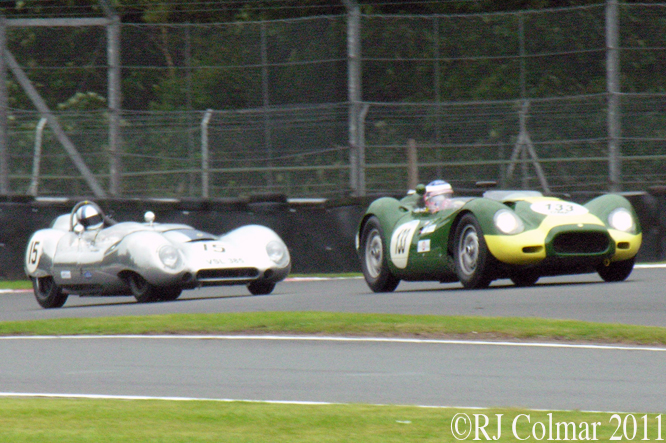The Lotus 15 was built to accept larger motors than had been possible with the hitherto very successful Lotus XI.
Built to take 4 cylinder Coventry Climax motors of between 1.5 litres / 92 cui and 2.5 litres / 153 cui the Lotus 15 stood just 24″ tall. The #37 built in 1958 seen at Silverstone above of Philip Walker and Danny Wright is powered by a 2 litre / 122 cui motor.
In order to lower the centre of gravity and improve the aerodynamics and handling the Coventry Climax 4 cylinder motors were 17 degrees off horizontal, one degree more than the 1958 Epperly Belond Exhaust Special that won the Indy 500 in 1958 and 1959, under the Williams and Pritchard designed and created aluminium skin.
The combination of slippery shape and good handling allowed Graham Hill to record 5th best time in practice at Le Mans in 1958 with a 2 litre Lotus 15 ahead of numerous 3 litre cars entered in the race.
However the Lotus 15 was hampered by unreliability Hill managed only three laps at Le Mans in 1958 before he had to retire with head gasket failure. It has been suggested that the Lotus 15 suffered a lack of development and attention to detail due to Colin Chapmans efforts to get his open wheel programme under way, along with development of the Lotus Elite road car. However the fact that three distinct variations of the 15 were built between 1958 and 1960 suggests this might not have been the case.
The Lotus 15 was not as successful as the Lotus XI and only 27 were built. Despite the lack of success today examples of the Lotus 15 like the the #15 of Ewan McIntyre seen chasing the #133 3.8 litre / 231 cui Lister Jaguar of Jon Minshaw and Martin Stretton at Oulton Park above are still capable of punching well above their weight in Historic events.
Thanks for joining me on today’s edition of ‘Gettin’ a li’l psycho on tyres’, I hope you will join me again tomorrow. Don’t forget to come back now !

